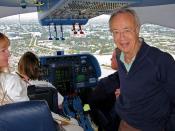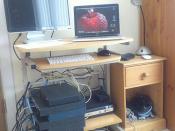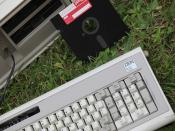The list of advances made in computer science is endless and involves just about everything imaginable. In many ways, the advances that have happened over the last few decades have laid the foundation for a much more profound change in the years ahead. "Today there are about a billion PC's in use around the world". (Network World, 2008) Computers are available everywhere, in the office and the home, in our cars, in stores and restaurants. We use this technology to help us mange our money, become more educated, keep in touch with our friends and family, preserve memories, or something as simple as ordering a pizza. It's taken years to get to where we are in technology, going back to as early as 1943 when the first electrical computer was introduced. Howard Aiken and IBM developed the first fully automatic electro-mechanical machine capable of not only addition, but also multiplication and trig functions as well.
"The machine was known as the Howard Mark 1". (Moor, 1995) In December of that same year the computer was used to help the allied war effort decode the "Enigma" encrypted messages. The first memory module called DRAM (Dynamic Random Access Memory) which is the short term memory storage used by computers. The first network was developed in 1969 by the U.S. government Department of Defense; this was used to allow various computers within different sections of the military to share information with each other. By the end of 1969 there were four host computers that were connected to the initial ARPANET. These computers were located at four colleges: UCLA, Stanford, University of California and University of Utah. Within two years there were 23 on the network, and the beginning of 1971 was the start of the internet. In 1970 the first RAM chip was...


